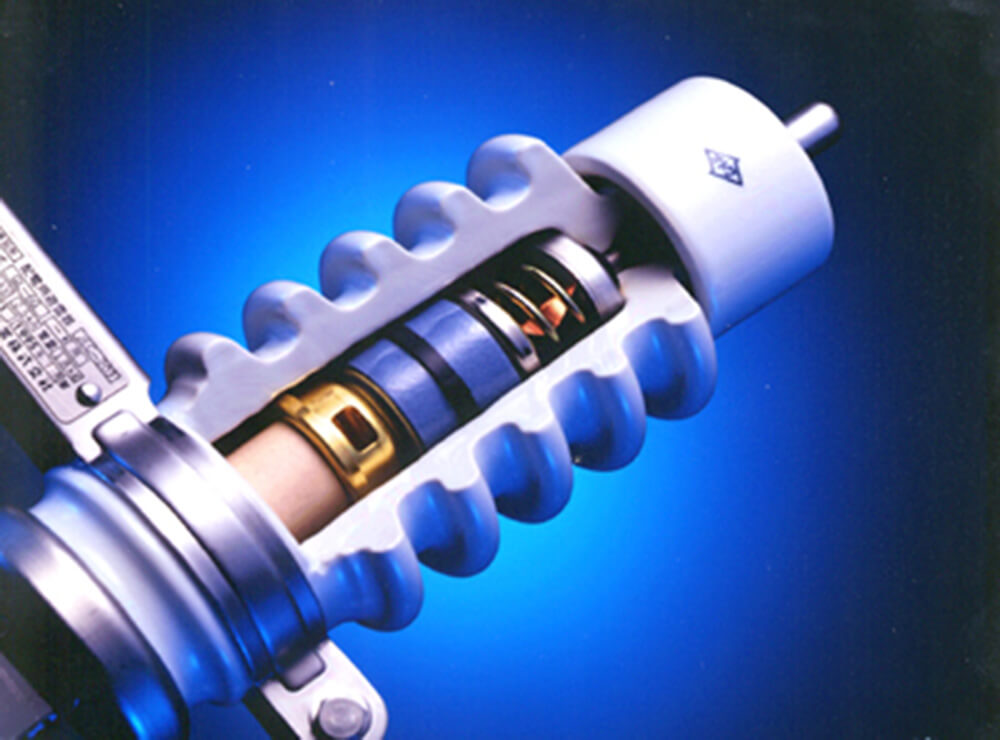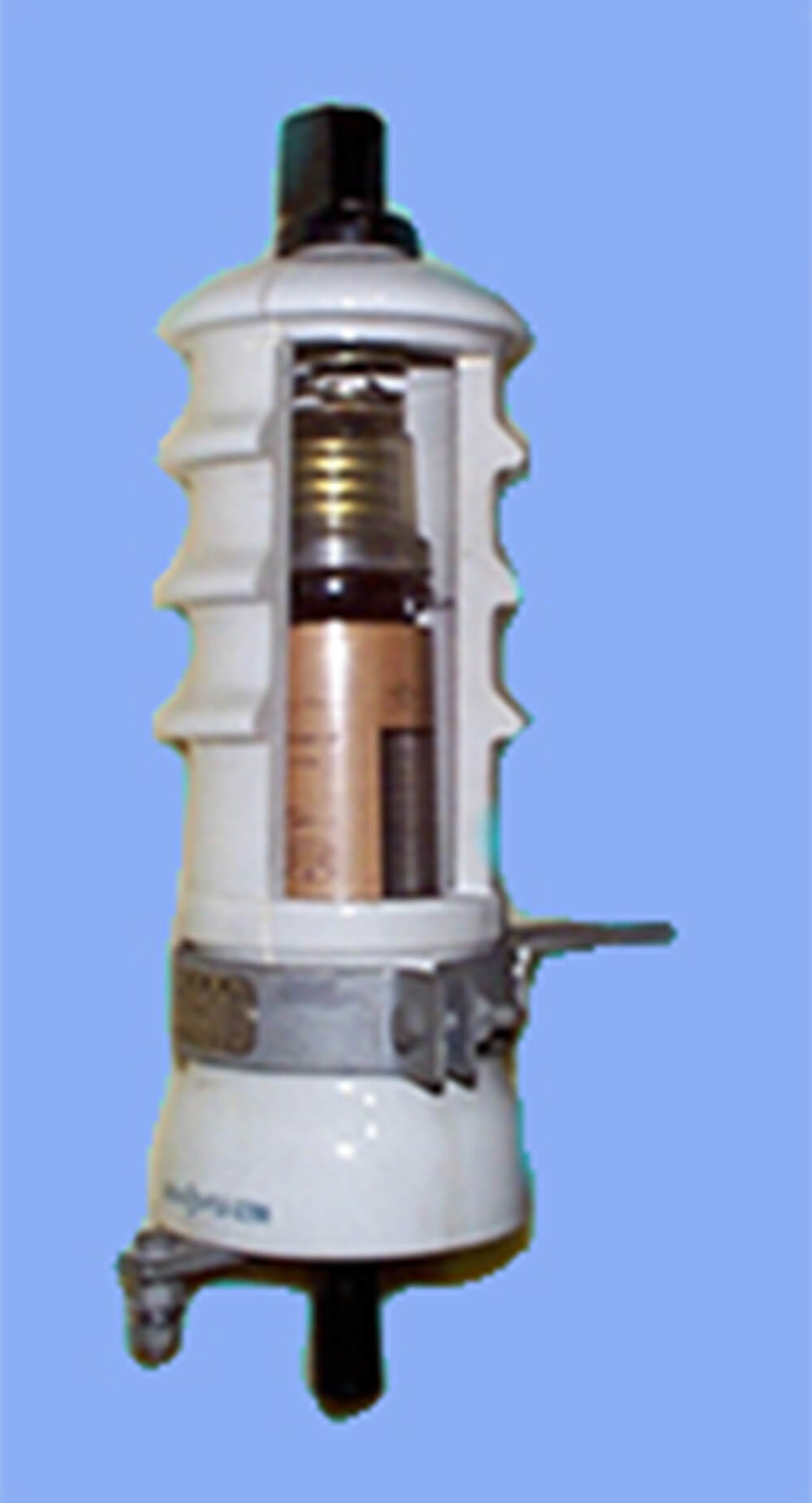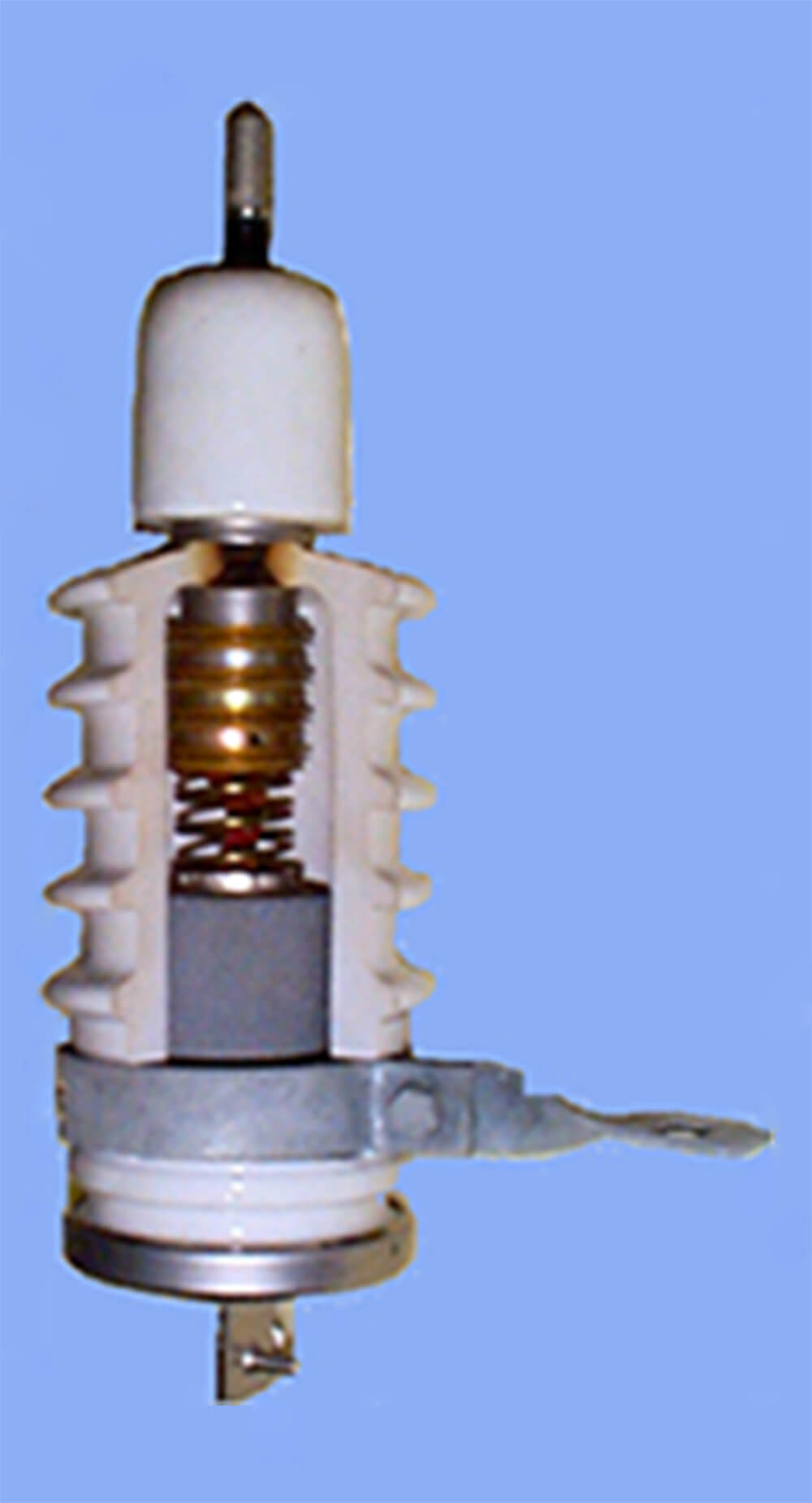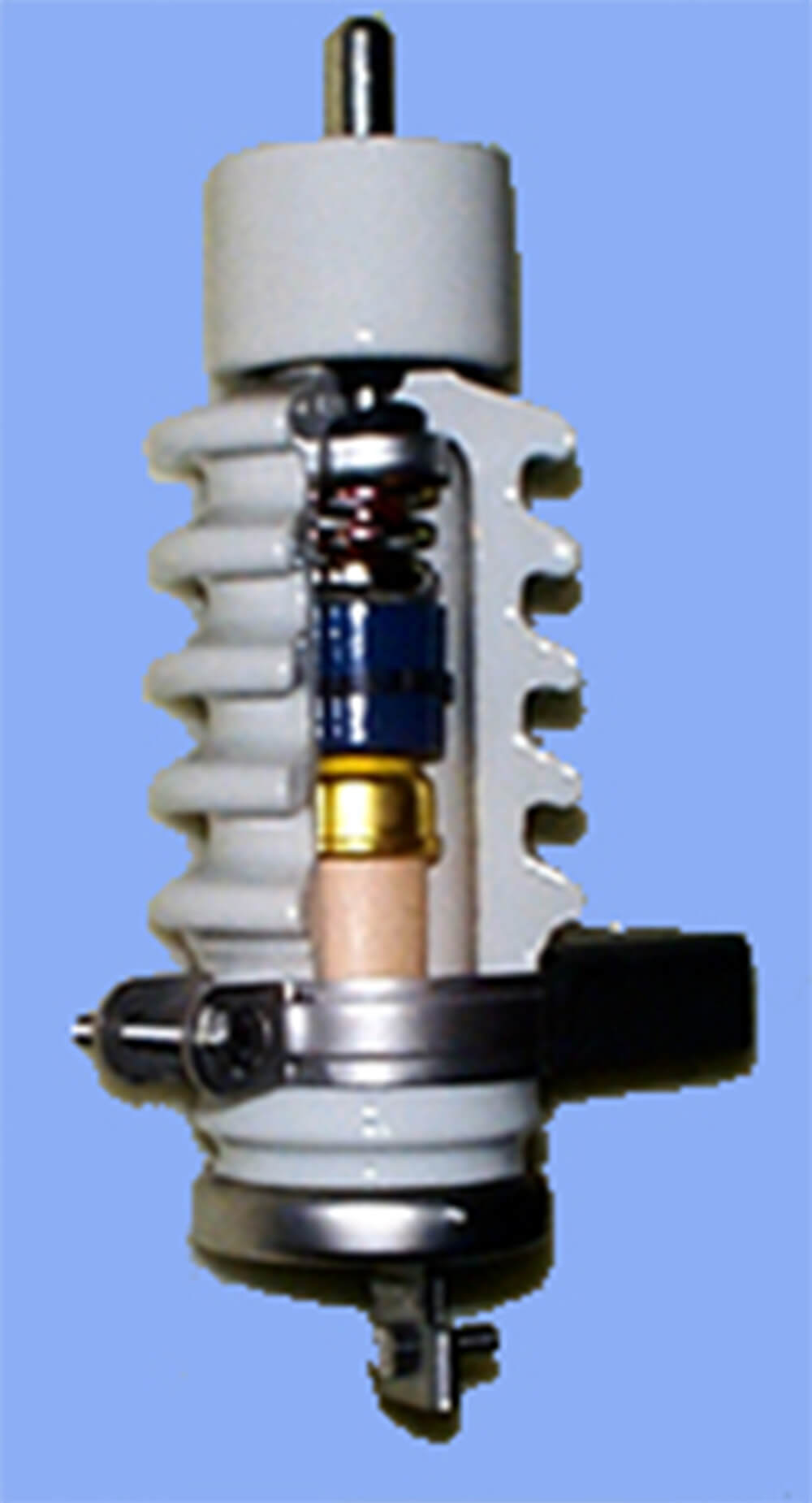Lightning arresters were developed to protect electrical equipment from lightning damage. In the beginning, they had a simple structure with a simple spark gap (electrodes facing each other). At the time of the introduction of lightning arresters, most of them were used to protect power distribution lines attached to poles and such. Nowadays, there are small lightning arresters that can be plugged into electrical outlets to prevent lightning damage to home appliances, as well as lightning arresters used in bullet trains.
In Japan, aluminum cell lightning arresters using aluminum electrolytic coating were introduced in 1911 as those with valve action.
Silicon carbide (SiC) lightning arrester developed around 1930 was used as the main material, and P-valve lightning arrester (our product), in which aluminum foil was attached to insulating paper and rolled into a cylindrical shape to form the characteristic element, was introduced.
In 1968, Japan was the first country in the world to develop a zinc oxide device (ZnO device). Compared to conventional SiC lightning arresters, the zinc oxide element has the ability to instantly and efficiently process lightning energy, and has spread throughout the world.

Around 1950 to 1990

Around 1960 to 1990

Around 1975 to present
